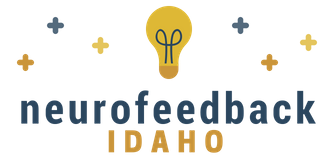 Addiction: Many people think addiction is due to a lack of self-discipline, but addiction is physiological, not psychological. People with addiction are often called “weak” by their family and friends, but addiction is a disease, and it is very hard to change. Addicts struggle with emotions such as guilt and shame, anger and frustration. Addiction is a brain disease, a mental health disorder that severely debilitates a person in all aspects of his or her life. In addition, people with addiction frequently suffer from other mental health disorders such as depression, bipolar disorder, and anxiety. Neurofeedback targets the brain disorder of addiction. Through neurofeedback, a person’s brain is retrained. Teaching the brain how to be calm, focused, and relaxed helps a person think more clearly. Neurofeedback training provides a solid base on which to build recovery and prevent relapses. It helps teach the tools one needs to cope long term.
Addiction: Many people think addiction is due to a lack of self-discipline, but addiction is physiological, not psychological. People with addiction are often called “weak” by their family and friends, but addiction is a disease, and it is very hard to change. Addicts struggle with emotions such as guilt and shame, anger and frustration. Addiction is a brain disease, a mental health disorder that severely debilitates a person in all aspects of his or her life. In addition, people with addiction frequently suffer from other mental health disorders such as depression, bipolar disorder, and anxiety. Neurofeedback targets the brain disorder of addiction. Through neurofeedback, a person’s brain is retrained. Teaching the brain how to be calm, focused, and relaxed helps a person think more clearly. Neurofeedback training provides a solid base on which to build recovery and prevent relapses. It helps teach the tools one needs to cope long term.- Autism: Neurofeedback training has been used with several thousand autistic spectrum children over the last 15 years, by hundreds of clinicians. There have been several research studies published to support these efforts. What’s the first thing parents consistently report as their children start training? They usually notice their child is more calm, manages emotions better, and doesn’t get overwhelmed as easily. There are many other changes, as noted below, but these are typically the first.
- Chronic Pain: Pain is one of several sensory systems that keep us apprised of the status of our bodies. As we hurry through our daily lives, we usually view pain at the very least as an inconvenience, if not a major disruption. It’s fortunate that we have our pain sensors-they provide a valuable warning to us that we need to stop and take care of ourselves. For chronic pain, neurofeedback can help reduce pain or perhaps how the brain manages pain, even in severe cases.
- Fibromyalgia: Fibromyalgia is “A common syndrome of chronic widespread soft-tissue pain accompanied by weakness, fatigue, and sleep disturbances; the cause is unknown.” The word fibromyalgia comes from the Greek myos meaning “muscle”, Greek algos meaning “pain”, and New Latin fibro meaning “fibrous tissue”. Fibromyalgia is a common and chronic disorder. When a health illness or condition is chronic it means it is long-lasting. Even though fibromyalgia is frequently referred to as an arthritis-related condition, it does not cause joint damage or inflammation, as arthritis does. Neither does fibromyalgia cause damage to muscle and other tissues. However, it is similar to arthritis because it causes severe.
- Learning Disorders: Many of the methods used and promoted to help people with learning disabilities are intended to help a person compensate for, or work around, their learning difficulties. Neurofeedback actually improves learning skills by training the areas of the brain relevant to learning or executing skills such as math, reading, and auditory and visual processing. Research studies show that several areas of the brain coordinate in the learning process. These separate parts of the brain communicate with each other at extremely fast speeds. If the timing of the communication is even slightly off, there can be impairment in the ability to learn. New research shows that this “connectivity training” seems to consistently improve learning difficulties. Neurofeedback training can improve the coordination and communication between different areas of the brain. Improved timing in the brain has a significant impact on one’s ability to learn. Neurofeedback directly targets the coordination and communication between areas of the brain to improve timing, and therefore learning. pain and tiredness, and can undermine the patient’s ability to go about his daily activities. Fibromyalgia is seen as a rheumatic condition. A rheumatic condition is one that causes joint and soft tissue pain.
- Migraines: Although neurofeedback training can stop a migraine while it is occurring, stopping individual migraines is not the main goal. Training with neurofeedback can be very effective in reducing the intensity and frequency of migraines over the long term providing real relief for people suffering from migraines. Deborah Stokes, Ph.D, a neurofeedback clinician in Alexandria, VA. recently published a study that showed significant improvement in migraines using neurofeedback. The study was co-authored with Martha S. Lappin and entitled “Neurofeedback and biofeedback with 37 migraineurs: a clinical outcome study”. The study found that, with neurofeedback, 70% of migraine sufferers have a significant reduction in the frequency of their migraines.
- O.C.D: With Obsessive Compulsive Disorder (OCD), a person can’t stop repeating specific behaviors or stop his or her brain from repeating particular thoughts. A substantial body of research shows that problems with OCD are related to the functioning of areas in the front of the brain. If that part of the brain is working too slowly or quickly, a person is unable to stop repeating certain thoughts or behaviors. Many therapists and other health professionals using neurofeedback to treat OCD note marked reductions in OCD symptoms in their clients after neurofeedback training. People with OCD relate that, after neurofeedback training, they do not really need to make an effort to stop unwanted repetitive thoughts and behaviors. They say that they their minds are much quieter. With neurofeedback training, the brain learns to respond to situations in a more conventional and healthy manner.
Feel free to ask any neurofeedback related questions over the phone, or send your questions via this form below. If you're interested in an initial consultation with Dr. Jon Harmon DC, please contact our office to schedule a time that works for you.
